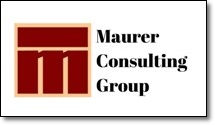‘Designing Strategies’ Newsletter
May – June 2015 Volume 12 — Issue 65
9 Important Best Practices for Small Business Success
We have been in and out, then in and out again, of an economic recession that just doesn’t seem to want to give up. When you think about it, that is exactly how the economy works – it has ups and downs over and over again throughout the life of every small business. That’s just the way it is. Company leaders who decide to operate all the time in ways that will keep them prepared for the good economy and the bad, have a much better chance at success. Keeping up with the best practices for small business success is crucial to staying competitive in your industry. Knowing the latest best practices can alert attentive business owners to new systems and procedures to keep them on top.
Instead of operating in crisis mode all the time, good leaders opt for a straight and stable approach. Strategies and planning keep them prepared for the storms, and opportunities, that come along. Operating based on best practices all the time keeps crises at bay and a stable company running on high when things are all going well. Here are ten practices every small business owner can use to prepare for upcoming surprises and sunny days.
Financial Best Practices for Success
1. Create realistic budgets for your small business. Review them monthly to be sure your accounts payable and receivables are consistent with where you thought they would be. If necessary, make adjustments to keep your projected budgeted amounts and reality in line. You have to know what your sales need to be to cover your projected costs of doing business – and making a profit.
2. Schedule time for frequent reviewing of your financial documents. At the very least,  review your balance sheet and profit and loss statements. These important reports were not created just to be handed off to your accountant at tax time. They are to help you see how your company is doing on a daily basis.
review your balance sheet and profit and loss statements. These important reports were not created just to be handed off to your accountant at tax time. They are to help you see how your company is doing on a daily basis.
3. Schedule time at regular intervals to meet with an accountant to review financial documents. These professionals are there to help you. Take advantage of the knowledge they possess that you do not. Larger companies are able to hire employees to deal with financial issues and nothing else. Startups and very small businesses seldom can afford that luxury. Use the best financial expert you can afford and use them to your advantage.
4. Go back to your mindset when you first started your small business; don’t spend money you don’t have. Keep your operations running smoothly by reviewing everywhere you spend money. Ask for better discounts from companies you have dealt with for a long time. If you have proved your value as a customer by paying all bills on time, you may have earned better pricing. Suppliers won’t come to you and offer a better deal, so go after it. Or, find another supplier that values you enough to want you to make a good profit.
5. Trim the fat in your spending. Without being insane about it, look at things you have been paying for. If you don’t need them, cancel them. Spend your funds only on things that can help move your small business forward toward.
6. Bill early, bill often. Get a deposit or retainer – understand the difference and how to handle each one – up front with the signed contract before you begin working for a client. If you are only sending out invoices monthly, do it more often. Why wait 3-4 weeks, until ‘billing day’ to send an invoice out for something completed or delivered yesterday? If your payment terms are at 30 days, consider changing to 15 days. Better yet, set terms for final payment “Upon Delivery” or “Upon completion of project.” Don’t leave large amounts of your money in your customer’s hands. Develop a collection strategy to keep customer accounts current.
Best Practices Basics: Products, Services and Sales for Growth
7. Train your employees – and yourself – on Sales Techniques. Technology has advanced.  Social media marketing has come on the scene in a big way. But, when it comes down to it, a sales call in person is still the best way to make a sale. A printed brochure or website description of your products and services can easily be pushed off into a pile or forgotten. It is far more difficult to ignore an impassioned presentation by a real, live, person sitting across from you.
Social media marketing has come on the scene in a big way. But, when it comes down to it, a sales call in person is still the best way to make a sale. A printed brochure or website description of your products and services can easily be pushed off into a pile or forgotten. It is far more difficult to ignore an impassioned presentation by a real, live, person sitting across from you.
8. Develop a Sales System Strategy for your team. Making sales is a process. It is an important process. It takes tools and well-develop strategy to take customers from being complete strangers, to potential customers, to actual customers and then to long time, loyal customers.
9. Review each of your products and services regularly. Which are making money and which are not? If one of your products is being supported by the sales of another, maybe it’s time to drop it and move on. Be on the lookout for new products and services to add to your company’s lines. Look for products and services that will make better profits.
Best Practices in Strategies, Systems and Processes – Can’t Succeed Without Them
These tips are meant to be incorporated as part of the culture you establish for your small business. It is up to company leaders to pass on an ‘Always strong, always growing.’ mentality to all employees. These practices are not intended to be done once in a while, or by just certain industry sectors. Keep these simple ideas in mind to keep your small business prepared for good times and bad.
A company’s systems and processes are the backbone of a growing, successful company. Those who take a ‘fly by the seat of your pants’ approach to doing business are the first to crumble when there is a dip in the economy or major change occurs in the market place. Keeping everyone on the same page at all times, following precise strategies based on best practices for small business success are critical. These elements will go a long way in fostering a company that can weather any bumps or storms that may come along.
Financial Documents image: www.freedigitalphotos.net | Pong
Business Growth Chart image: www.freedigitalphotos.net | Stuart Miles
For more small business information between e-Newsletter issues, sign up for ‘Designing Strategies – The Blog’.
For help diagnosing issues stalling your firm, analysis of systems and procedures or developing strategies to move your company forward, contact Terri at 330.283.3999 or by e-mail.
‘Designing Strategies’ is a complimentary publication brought to you by Terri L Maurer. Terri is owner of Maurer Consulting Group, a business management consultancy focused on helping small business owners and leaders get on track, focused on growth and success.






